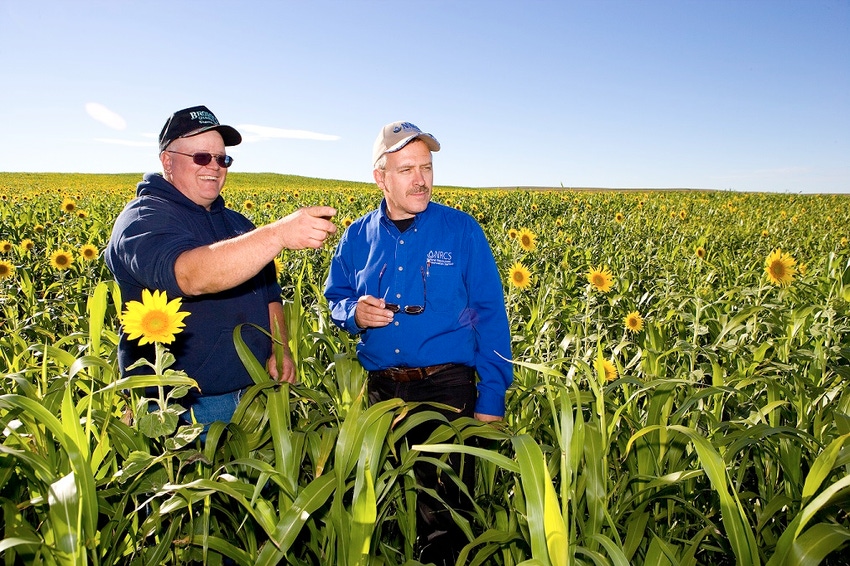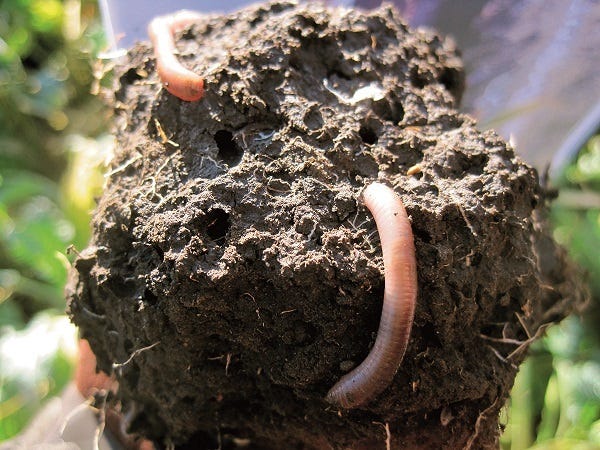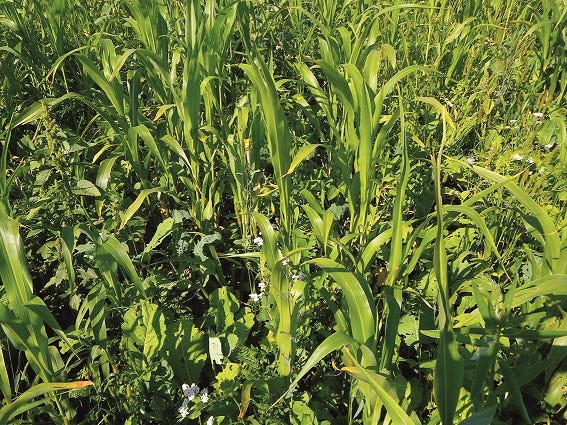February 8, 2019

North Dakota farmer and rancher Gabe Brown thinks every day about a statement Canadian rancher Don Campbell made at a conference 20 years ago in Bismarck. “I’ll never forget. Don said, “‘If you want to make small changes, change the way you do things. If you want to make major changes, change the way you see things.’” Brown recalls.
“It was like a light went off in my head,” Brown writes in his new book, Dirt to Soil—One Family’s Journey into Regenerative Agriculture. “I had been making small changes and praying for big result. I needed to be looking at our entire operation differently if I was going to dig us out of the hole we were in and stay in business.”

4 years, 4 disasters
The hole he writes about was debt, after devastating hailstorms took out his entire crop two years in a row in 1995 and 1996, followed the next spring by record cold temperatures and a 3-day blizzard that claimed many calves from his cow-calf herd. That summer brought a heat wave so persistent he didn’t harvest a single acre of cash crop. In 1998, when his crop looked good and he thought his luck was changing, a late June thunderstorm once again brought hail that knocked out 80% of his crop.
“Those four years were hell to go through (no insurance against hail), but they turned out to be the best thing that could have happened to us, because they forced us to think outside the box, to not be afraid of failure, and to work with nature instead of against her,” Brown says. “They sent me on this journey of regenerative agriculture.”
Regenerate soil faster
1,000 years to grow an inch of topsoil is the conventional thinking. But using regenerative principles, Brown says he has grown several inches of new topsoil in only 20 years. Through a synergistic combination of soil microbes, mycorrhizal fungi, earthworms, organic material, plant roots, water, sunlight, and the liquid carbon that plants create through photosynthesis, the Browns rediscovered the natural process for transforming compacted, depleted dirt made from years of industrial farming into rich, porous topsoil. “Biological life is a force,” Brown says. “Once it has been unleashed, it will continue to grow and generate new life.”

Synthetic fertilizer harmful?
Brown explains how some ideas stuck with him that would be considered radical by most farmers and ag advisers. “Dr. Kris Nichols, a microbiologist with ARS at Mandan, North Dakota, visited my farm and told me I was hurting my soil, not helping it, by applying commercial fertilizers,” Brown recalls. He had been forced to farm with fewer inputs when he had no money to buy them, so it wasn’t a foreign idea. Still, “I wondered wow, are my soils healthy enough I can farm without synthetic fertilizers?” Brown asked himself. After using cover crop cocktails for only a few years, he put down low rates of synthetic fertilizer to compare against no fertilizer in split trials for four years, with astonishing results.
More recently, Brown had soils on his farm tested by Dr. Rick Haney, a soil health scientist with USDA ARS in Temple, Texas. Brown’s farm is no-till, with high diversity in crop and cover crop diversity, with no synthetic fertilizer, fungicides, or pesticides applied. Livestock are integrated into the croplands. Brown’s soil was compared against three other farms with similar soils—one a heavily tilled diverse grain operation, with no livestock; one with minimum tillage, with little crop diversity, use of anhydrous ammonia at seeding and use of synthetic fertilizers and pesticides as needed, with no livestock; and one farm with no-till, medium crop diversity, and heavy use of synthetic fertilizer, herbicides, and pesticides to maximize yields.
The tests showed soil on Brown’s farm had 7 times as much nitrogen, 5 times as much phosphorus, 8 times as much potassium, and 4 times as much organic carbon and organic matter percent as the nearest other farm. His soil would also infiltrate a whopping 30 inches of water per hour compared to half an inch per hour and less on the other farms.
Covers meant to be multispecies?
“Brazilian agronomist Dr. Ademir Calegari, who had traveled the world studying cover crops, told us in a winter meeting in 2006 that you can grow a cover crop whether your farm receives two or two hundred inches of precipitation a year,” Brown says. “And he said cover crops are meant to be seeded in multispecies combinations.”

Brown and his friend Jay Fuhrer, the district conservationist with NRCS in Burleigh, North Dakota, wasted no time in testing the idea. With little soil moisture in the spring of 2006, district staff helped seed six one-acre plots to single species as a monoculture and seeded a seventh acre with all six species combined. “Only about an inch of rain fell on those plots between seeding and late July. The results were astounding—production was three times greater on the plot with the diverse polyculture mix!” he says. Brown couldn’t stop thinking about how well the cover crop cocktail performed in a drought; now he rarely uses a mix with fewer than 7 species.
Brown is highly sought after as a speaker at farmer meetings. Just last year, he spoke to more than 23,000 people at more than 100 presentations. His open-door policy on the Brown ranch resulted in visits by more than 2,000 people from all 50 states and 21 foreign countries last year. Gabe’s 240-page paperback book is available through Chelsea Green Publishing.
—end—
Five Principles of Soil Health
Gabe Brown farms by the five principles of soil health that he credits to Jon Stika, Jay Fuhrer, and Ray Archuleta—all proponents of farming in ways that build healthy soils. Those principles:
Limit disturbance: Protect soil structure by using no-till techniques and avoiding all use of pesticides, insecticides, and synthetic fertilizers.
Armor: Keep the soil covered at all times.
Diversity: Strive for a healthy mix of plant and animal species.
Living Roots: Maintain living roots in the soil as long as possible throughout the year.
Integrate Animals: Manage livestock using regenerative strategies like adaptive multi-paddock grazing.

About the Author(s)
You May Also Like




